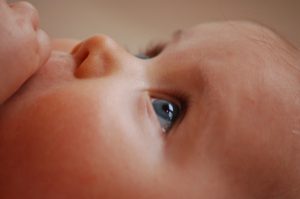An In-Depth Look at Pediatric Retinoblastoma
Retinoblastoma is a rare cancerous tumor that typically originates in a part of the eye called the retina, which is a thin layer of nerve tissue that coats the back of the eye and allows a person to see, behind the pupil. Pediatric Retinoblastoma or Eye Cancer in Children occurs in children less than 4 to 6 years old. Luckily most children with this disease will be cured. With all the tragedies comes hope.
Retinoblastoma cancer affects the retinoblasts. What is a retinoblast? It is an immature cell of the retina that multiply during gestation or when the fetus is still in the womb and early life, where it makes enough cells to create the retina. Now instead of maturing into cells that detect light, these retinoblasts continue to divide and grow out of control, forming cancer, thus the term retinoblastoma. It can occur in one eye or in both eyes. If left untreated, retinoblastoma grows, making the affected eye painful or worse makes the patient blind.
Pediatric Retinoblastoma Noticeable Symptoms
Pediatric Retinoblastoma noticeable symptoms include a white color in the center circle of the pupil when the light is shown in the eye, such as when taking a flash photograph. This often is the scenario where parents or anyone who see the picture of the child whose eyes have glint or a glare or some other whiteness in the pupil. Children and families fighting childhood cancer are fighting a good fight. Pediatric Retinoblastoma particularly is a rare malignant tumor that is often diagnosed early, once the symptom is noticed.
Pediatric Ophthalmology Specialist
 The child is referred to a pediatric ophthalmology specialist, and the pediatric ophthalmologist will perform a fundus examination, once the child is diagnosed and confirmed with retinoblastoma the specialist will order tests to determine the size of the tumor and whether it has spread to other parts of the body. These tests may include an MRI or CT scan, bone marrow test or a spinal tap. And depending on the severity of the case some specialist will even do an ultrasound to help them make a proper accurate diagnosis, some cases the ophthalmologist may even decide that your child needs to be checked while under anesthetic so that they can have a better look at the retina.
The child is referred to a pediatric ophthalmology specialist, and the pediatric ophthalmologist will perform a fundus examination, once the child is diagnosed and confirmed with retinoblastoma the specialist will order tests to determine the size of the tumor and whether it has spread to other parts of the body. These tests may include an MRI or CT scan, bone marrow test or a spinal tap. And depending on the severity of the case some specialist will even do an ultrasound to help them make a proper accurate diagnosis, some cases the ophthalmologist may even decide that your child needs to be checked while under anesthetic so that they can have a better look at the retina.
There are Cutting-edge clinical trials are available to patients with Pediatric Retinoblastoma. This includes Enucleation, Cryotherapy, Laser photo coagulation therapy, Radiation therapy and Chemotherapy. Retinoblastoma patients who survive the battle of this form of cancer can also pass this form of cancer to their future children, because of hereditary factors brothers and sisters of the retinoblastoma survivors should also be examined for this disease.

















